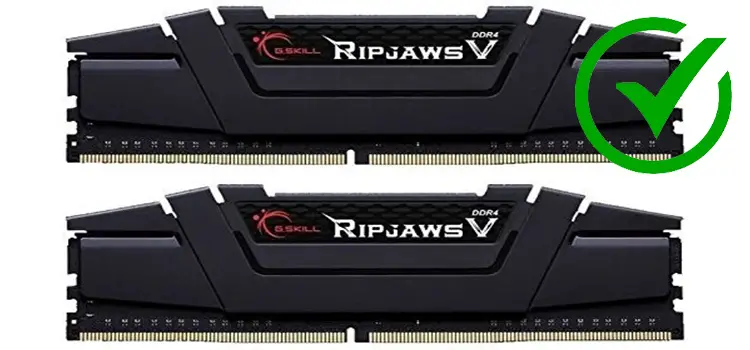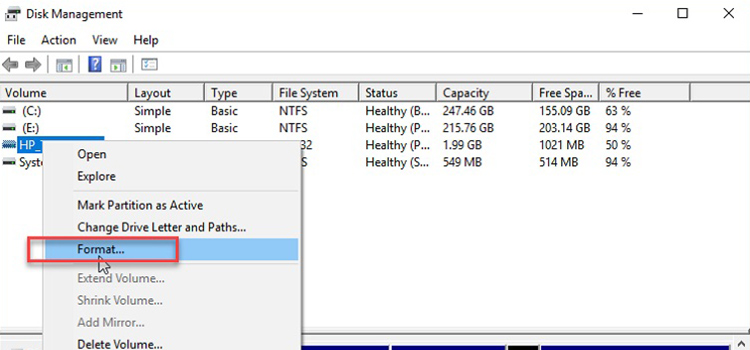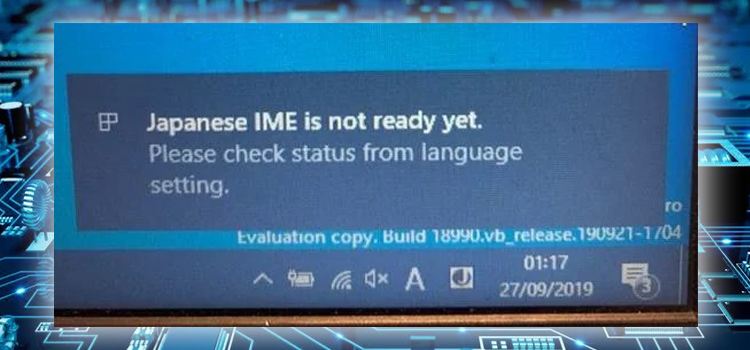[Fix] 3000MHZ RAM Running at 2133MHZ (100% Working)
The 3000MHz RAM is running at 2133, which is slightly slower than the rated speed. This is most likely due to the RAM not being compatible with the motherboard’s bus speed. Nonetheless, the RAM can continue to operate at a high level, providing the user with a quick and responsive experience.
Overclocking RAM from 3000MHz to 2133MHz can boost performance in games and programs where extra CPU speed won’t matter. Overclocking RAM isn’t easy despite the small payoff. Before proceeding, consider your motherboard’s specifications and whether it can handle the speed increase. Learn how to overclock 3000MHz RAM to 2133MHz by reading on.

Reasons for Why 3000 Mhz RAM Is Running at 2133

The following are common causes of a faulty memory module causing your 3,000MHz memory to run at 2,133 MHz:
1. Memory Module Error
A common manufacturing flaw in soldering is that results in loose connections between the motherboard and the module. A faulty module will not provide the correct voltage or data speed as specified by your system.
2. Too High a Voltage
If you have more voltage than is required for your computer to run efficiently, you may have a problem with the motherboard or processor. This can happen if the power supply input was accidentally changed or if someone attempted to overclock their CPU or GPU to improve performance.
It can also happen when there is a cooling issue, such as an insufficient heat sink or insufficient airflow from fans. The outcome will be the same. Overclocking causes slower processing speeds and an increased likelihood of errors.
3. Components That Are Damaged
This includes power supplies, motherboards, graphics cards, and hard drives. Even though these parts are waterproofed, water can cause electrical damage. If this happens with DDR3 (2133 MHz) memory modules instead of DDR4 (3000 MHz), the modules may operate at slower speeds while accessing incompatible data.
3000MHZ RAM Running at 2133 – Overclocking Your RAM
Here are some approaches you can take.
1. Choosing the Best Hardware
You can increase the speed of your RAM if you have a motherboard and CPU that support overclocking. If you’re not sure whether your motherboard supports overclocking, a quick online search will tell you. It’s important to note that while all motherboards support overclocking, not all of them support the same speeds.
2. The Bios
First, look in the BIOS for the clock frequency and current memory speed. You may be prompted for this information, but if not, it should be available through one of the tabs or as a default setting in the Memory Configuration section. This is usually found in the overclocking settings and under CPU Multiplier Control on most motherboards.
3. Windows Performance Analyzer
To overclock a CPU, open Windows System and right-click on its name. The Intel Core i7-4790 is used. When you right-click this, a menu with Advanced Settings should appear. Selecting this gives you more system customization options. It shows settings that affect your processor’s speed compared to other models.
4. Extreme Tuning Utility From Intel
Many processors on the market are no longer soldered to motherboards, allowing you to upgrade them as needed. However, knowing how much memory a particular board supports before making a purchase can be difficult. The Intel Extreme Tuning Utility, which can tell you everything from maximum memory speeds to whether or not overclocking is supported, is one way to find out.
5. Memory Controller Overclocking
Overclocking is one of the simplest ways to improve system performance. The first step is to make sure you have the appropriate CPU, motherboard, and memory (depending on how much of each you have). Next, locate a benchmarking utility that will stress test your PC, such as Prime95 or ATTO Disk Benchmark. This will reveal whether you require additional cooling.
6. Command Rate Overclocking, Write Back Policy, and Cas Latency
If you’re an overclocker, one of the first things you want to reduce is the Command Rate in order to achieve a higher frequency. That being said, different kits will have varying limits on how low they can go. For example, a Corsair Vengeance LPX kit with timings of 15-17-17-35 will reach 2200MHz before requiring voltage adjustments.
7. TDP Limits Management
CPUs, in general, have power consumption limits. To prevent the CPU from burning out while overclocking, limit the amount of power used by the CPU. Increasing the voltage may also be required. Some people recommend raising a chip’s TDP limit from 45 to 140 watts before overclocking so that a motherboard doesn’t detect it as faulty during or after the overclock.
8. Keeping Your Preferences
After you’ve saved your settings, it’s time to put them to the test. As our test subject, we’ll use the Final Fantasy XIV: Stormblood benchmark. This benchmark’s maximum resolution is 1920×1080, which should be sufficient for testing overclocking results. So, first and foremost, launch Final Injustice (or another benchmark of your choice) and run it through a five-minute test with all settings at their highest.
Advantages of 3000MHZ RAM Running at 2133
Overclocking a 3000MHZ RAM to 2133MHZ results in improved performance in applications and games, reduced downtime when using hardware resources, less heat production, and improved stability. Overclocking, on the other hand, may void your warranty and introduce instability into the system.
Disadvantages of 3000MHZ RAM Running at 2133
Overclocking can boost hardware performance quickly, but it can cause instability and system crashes. Unless you’re an experienced overclocker or can swap PC components at will, avoid doing this. Such operations aren’t covered by a warranty, so you’re on your own if something goes wrong. It may void original part warranties.
Frequently Asked Questions and Answers
Why Is My RAM Speed 2133?
RAM can be overclocked to increase the speed of a computer. Overclocking results are influenced by a variety of factors, including RAM type, memory voltage, CPU performance, and motherboard voltage settings. Checking the RAM specifications of the motherboard and adding it up yourself is the simplest way to determine if you have an overclockable CPU.
Why Is My RAM Speed 2133 Instead of 2400?
RAM speed is determined by two major factors: the amount of time it takes for an electrical signal to propagate from one transistor or storage unit to another, and the number of bits that each storage unit can hold. The rate at which a system transfers data is determined by how quickly bits can change from 0 to 1. Multiple bits are sent as long streams to allow for faster transfer.
Can I Use 3000MHZ RAM in 2133MHZ Motherboard?
This is a common question in gaming communities, but the answer is not so simple. You might be able to run at this frequency, but with lower-end CPUs, there are diminishing returns, and some motherboards will only operate at the maximum frequency they support. You can increase your memory frequency by adjusting your BIOS settings or using third-party programs such as Ryzen Master or Intel XTU software.
Can I Use 2133MHZ RAM With 3200MHZ RAM?
3200MHz RAM runs faster than 2133MHz RAM, but it cannot be combined with 2133MHz RAM. As a result, the maximum speed you can use with 3200mhz memory sticks is 2133MHz. When using mixed RAM speeds, the rule of thumb is that the lowest common denominator must be lower.
That is, if you have 2133MHz RAM and 3200MHZ RAM, it will not function because 2133 is less than 3000. It should work fine if both are 2400MHz or higher because they are both faster than 2100MHZ.
Last Words
Finally, the transition from 3200MHz DDR4-2133 to 3333MHz DDR4-2400 is straightforward. If you want more performance, overclocking is the way to go. If you have older hardware with lots of cooler airflow and want more performance for competitive gaming, overclocking may be a viable option for you. Remember that some apps will not work on overclocked hardware.
Subscribe to our newsletter
& plug into
the world of PC Hardwares

![[3 Fixes] Volume Information for This Disk Cannot Be Found](https://www.hardwarecentric.com/wp-content/uploads/2022/11/Volume-Information-for-This-Disk-Cannot-Be-Found-Solution-for-You.jpg)


![[4 Fixes] Kernel-Power Event ID 41 Task 63](https://www.hardwarecentric.com/wp-content/uploads/2022/09/Kernel-Power-Event-ID-41-Task-63.jpg)
![[6 Fixes] Computer Shut Off And Won’t Turn Back On](https://www.hardwarecentric.com/wp-content/uploads/2023/06/Computer-Shut-Off-And-Wont-Turn-Back-On-1.webp)
